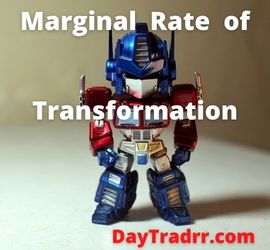What Is Segment Margin?
 Segment margin is the amount of profit or loss generated by one component of a firm. Knowing the gross margin for the whole firm is not usually sufficient in huge corporations. However, knowing the segment margins for each division of the firm offers a more realistic view. It can help identify both expenditures and sales where the company is making the most value as well as its strengths and weaknesses. Segment margin may also be used to calculate a company’s profit for distinct geographic areas. Further, analyzing segment margins might help determine how vulnerable a company’s total gross margins are. In general, publicly traded corporations are required by the Securities and Exchange Commission to disclose the profitability of business sectors.
Segment margin is the amount of profit or loss generated by one component of a firm. Knowing the gross margin for the whole firm is not usually sufficient in huge corporations. However, knowing the segment margins for each division of the firm offers a more realistic view. It can help identify both expenditures and sales where the company is making the most value as well as its strengths and weaknesses. Segment margin may also be used to calculate a company’s profit for distinct geographic areas. Further, analyzing segment margins might help determine how vulnerable a company’s total gross margins are. In general, publicly traded corporations are required by the Securities and Exchange Commission to disclose the profitability of business sectors.
Segment margin is a profitability metric. However, it only measures the profit or loss made by a specific product line or geographic area of a company. As a result, the segment margin is primarily used as a tool to compare the profitability of a company’s various components. The metric is very useful for big corporations with many business lines or a presence in multiple geographic locations.
Why Does Segment Analysis Matter?
Large multinational corporations operate across many regions and provide a range of products or services. As a result, management and investors need to know how the various business divisions are functioning. One can better analyze performance if the firm divides its activities into segments and calculates segment margins. Examining each component in an enterprise can help to determine whether parts of the company perform above or below average. It also assists businesses in determining where further cash should be invested. Because small businesses do not have multiple operational sectors, this idea is of little value to them. However, according to generally accepted auditing standards (GAAS), public corporations must report profit and loss in each segment separately. This practice applies if the total assets or revenue contribute 10% or more of the overall profit or assets of the firm.
Segment Margin – A Closer Look
Segment margin analysis is a useful tool for large enterprises. It informs management about which divisions or product lines of the company are doing well and which are not. Understanding the different segment margins allows management to effectively allocate resources. If required, they can remove underperforming product lines. Segment margin may also be applied to:
- Subsidiaries
- Sales territories
- Geographic regions
- Specific stores
- Divisions or departments
A tire manufacturer will most certainly calculate its overall profit margin for the entire enterprise. However, if large enough or publicly traded, it might also disclose segment margins. These are individual profit margins for separate components of the business. For example, isolating bicycle tires, automobile tires, truck, and heavy equipment tires offer more insight. If the firm has many locations, the segment margins can be isolated by region. For example, North America, Europe, Asia, and South America might be reported individually.
It is all well and good if a business appears to be doing very well and generating good performance overall. However, it is not favorable if one or two segments carry the company and the rest of the firm is underperforming. Investors’ and analysts’ perceptions of the company and its value may be influenced. Its value may be lower when compared to another firm with comparable gross margins driven equally by all business sectors. The value of a firm with just one high-performing sector may be jeopardized. Particularly if that area is predicted to contract in the future owing to technology developments or economic challenges.
Examples of Business Segments
Examples of the segments of a business are:
- Individual store locations
- A geographic region
- A product line
- A sales territory
- A subsidiary
- For a public company, any business unit that has at least 10% of the revenues, net profits, or assets of the parent company
How Do You Find Segment Margin?
Segment margin is determined by isolating the revenues and costs directly attributed to a business segment. In general, including corporate overhead in the segment margin calculation is not standard practice. Including corporate overhead can obscure the segment’s operational performance. The exception is when corporate expenditures are removed if an operational segment is closed down. In that case, it suggests that the corporate expense is a direct cost of the section.
Segment Margin Formula
The segment margin formula is simply the segment revenue minus segment expenses. Only the variables directly tied to the segment are included. In other words, corporate overhead would not be included in the segment margin. This is the case when it is not directly involved in generating revenue or expenses for a particular segment.
Segment Margin = Segment Revenue – Segment Expenses
For example, let’s say a company generated the following numbers:
- Revenue for segment: $10 million
- Cost of goods sold for segment (or cost of sales): $7 million
- Profit for the segment: $3 million
If the accountant wanted to show segment margin as a percentage, it is calculated as ((segment revenue – segment expenses) / segment revenue)) x 100; or (10 million – $7 million) / $10 million = .30 x 100 = 30%
Segment Margin and Decision Making
Segment Margin data is vital to a large firm. Clearly, businesses benefit from their services and goods. Often as important is to understand exactly how their profits are derived. A corporation would utilize a segment margin to analyze if the product has enough economic value. With solid data, management can decide whether or not to continue manufacturing. Are the revenues and profits sufficient to justify the resources put toward these services and goods?
For example, Quicktread is a tire manufacturer that sells commercial tires to the general population. As sensible business people, their primary objective is to earn a profit. However, the company produces many items – bicycle, motorcycle, automobile, truck, and heavy equipment tires. Quicktread regularly analyzes its offerings so that the most lucrative and marketable products get the most attention. At the same time, they will discontinue product lines (or regions) that don’t generate as much income as the higher selling items. Quicktread can regularly determine which tire products are more lucrative by computing the segment margin for each product line in production.
Tracking segment margins can help identify whether portions of a firm are doing better or worse than average. The study may also be used to determine where further cash should be invested in a firm. However, since smaller firms are not big enough to have many business divisions, the measurement is of limited utility to them. This idea is primarily employed exclusively by publicly traded companies that are obliged by the SEC to publish segment information. Privately owned businesses are exempt from this requirement.
(Sources: accountingtools.com, investopedia.com, & strategiccfo.com)
Up Next: What are Closed Positions?
 Closed positions are transactions that have been liquidated by a trader and are no longer active. To close a position, you must trade in the opposite direction in which the position was opened. For example, if you take a long position in a company, you must sell an equivalent quantity of shares in order to liquidate your position. A position that has been closed cannot be reopened. Any profit or loss is recognized at the moment of closing, and the account balance is changed appropriately. Closing a position isn’t necessarily a manual process. For example, stop-loss and take-profit orders can be placed in advance. These orders will reverse your position automatically if the market price falls or increases to a pre-specified amount.
Closed positions are transactions that have been liquidated by a trader and are no longer active. To close a position, you must trade in the opposite direction in which the position was opened. For example, if you take a long position in a company, you must sell an equivalent quantity of shares in order to liquidate your position. A position that has been closed cannot be reopened. Any profit or loss is recognized at the moment of closing, and the account balance is changed appropriately. Closing a position isn’t necessarily a manual process. For example, stop-loss and take-profit orders can be placed in advance. These orders will reverse your position automatically if the market price falls or increases to a pre-specified amount.
Closing a position is completing a securities transaction that is the inverse of an open position. This action nullifies the open position and removes the original exposure. Closing a long stock position entails selling an offsetting amount of shares. While closing a short position entails purchasing an equal amount of offsetting shares. It is also a common practice to take offsetting positions in swaps to remove the risk before maturity. Position squaring is another term for closing a position.




